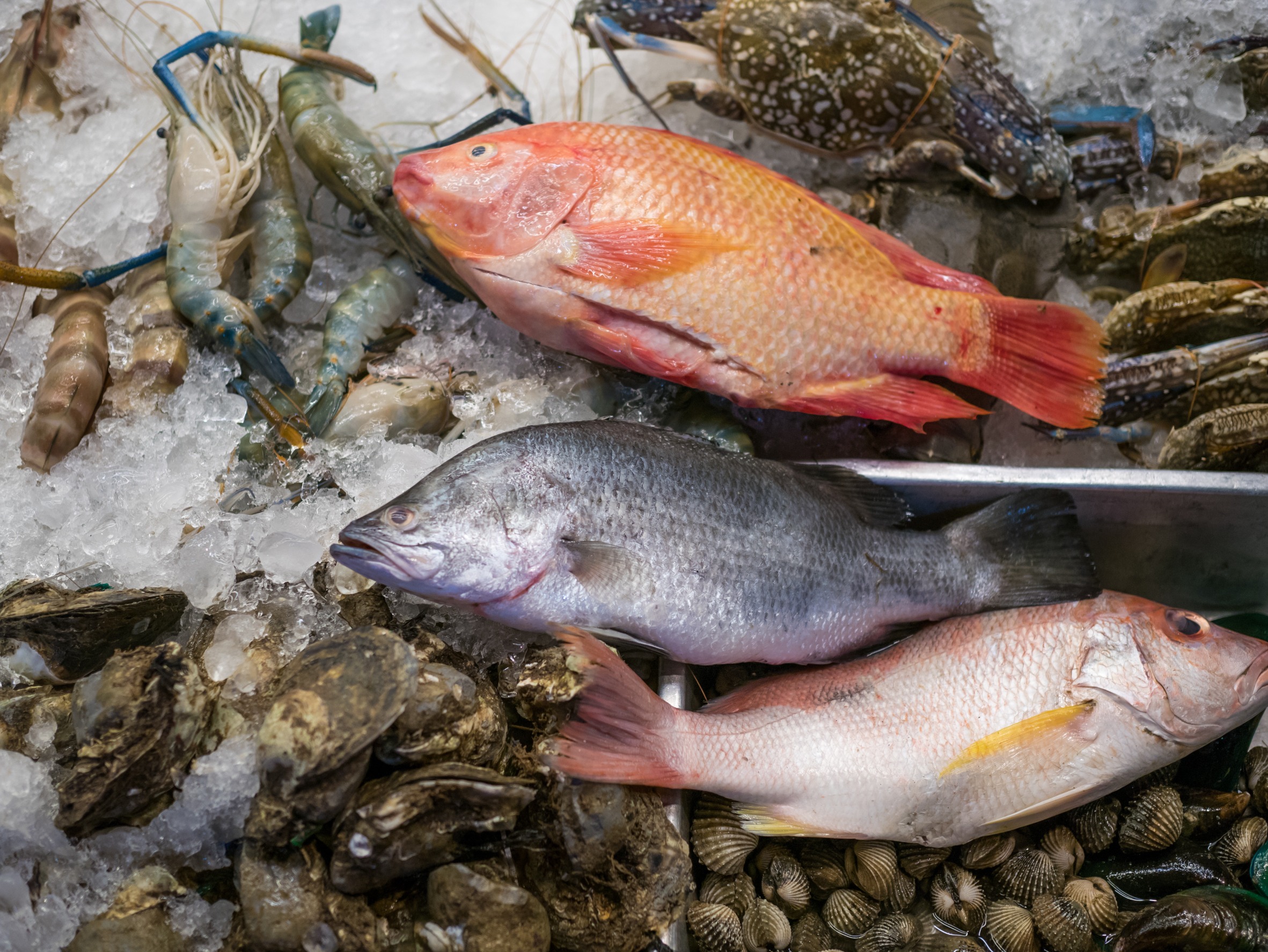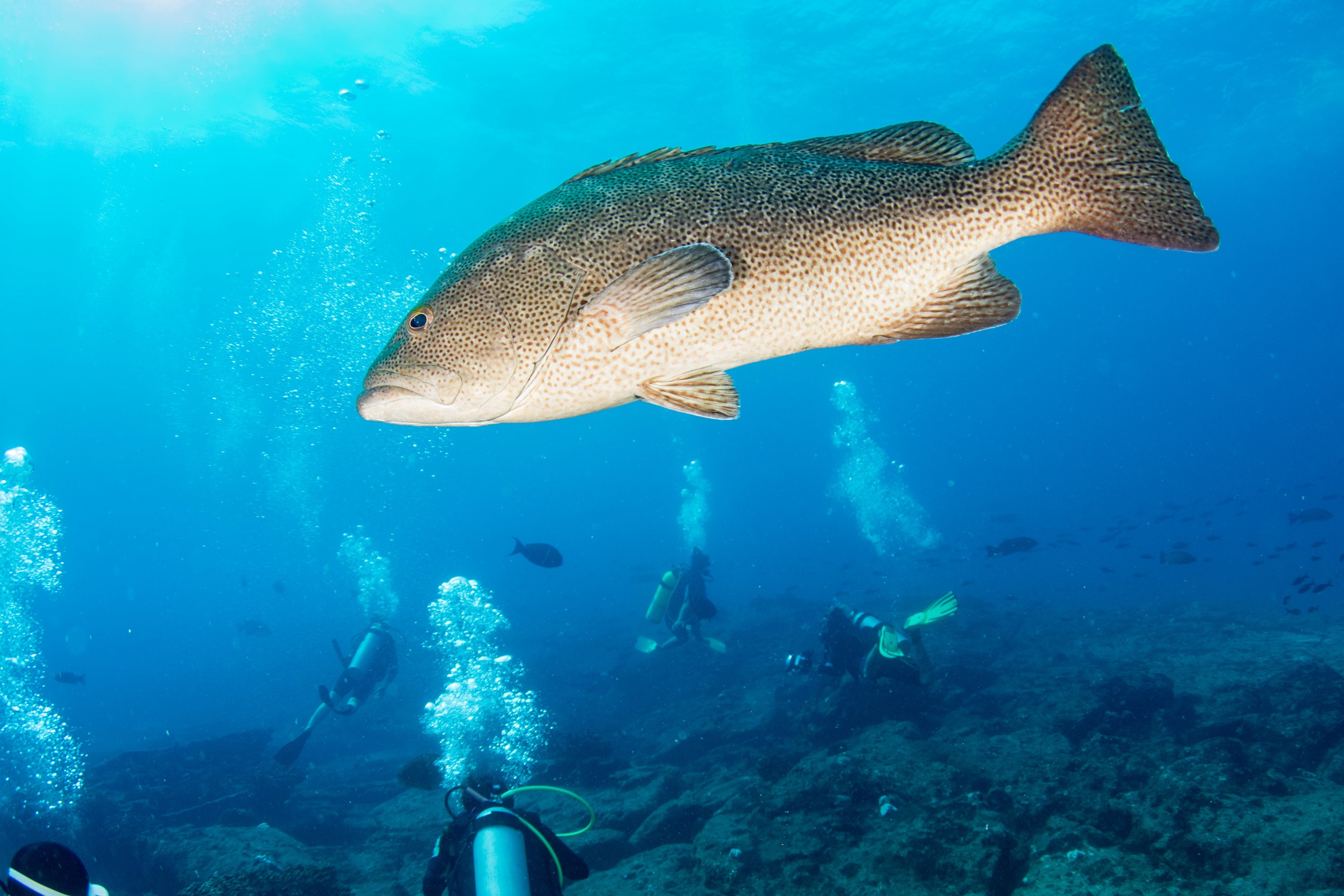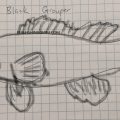Red Grouper and Black Grouper are two popular fish types often used in seafood dishes. Both types of fish have their own unique characteristics that make them stand out from each other. In this article, we will compare the two types of fish to help you understand the differences between them.
Red Grouper is a type of fish known for its slightly sweeter and milder flavor than Black Grouper. It has a firm texture, and large flakes make it a popular choice for grilling or frying. Red Grouper is also considered more forgiving during cooking and can be challenging to overcook without drying out. On the other hand, Black Grouper has a firmer texture and a more pronounced flavor that is often described as similar to halibut. It is a popular choice for blackening or baking.
By understanding the differences between Red Grouper and Black Grouper, you can decide which type of fish to use in your next seafood dish. Whether you prefer a milder flavor or a more pronounced one, there is a type of Grouper that will suit your taste. In the following sections, we will delve deeper into the differences between these two types of fish.

Physical Characteristics Comparison
Color Differences
Red grouper and black grouper have distinct color differences that set them apart. As the name suggests, the red grouper has a reddish hue to its skin, while the black grouper has a darker, almost blackish coloration.
The red grouper has a reddish-brown color on the upper part of its body, while the lower part is a lighter pinkish-white. This coloration helps the red grouper blend with the coral reefs where it typically lives.
On the other hand, the black grouper has a darker coloration overall, with black blotches and brassy spots on its olive or gray body. Its cheeks are gently rounded, which also helps distinguish it from the red grouper.
Size Differences
Another difference between the two types of grouper is their size. According to NOAA Fisheries, adult black groupers can grow up to 2.3 meters (7.5 feet) in length and weigh nearly 200 kg (440 pounds). In contrast, red groupers typically grow to a maximum length of around 3 feet and weigh up to 50 pounds.
In addition to their overall size, the two types of grouper also have different physical characteristics that help distinguish them. The black grouper is the only grouper with ten dorsal spines, while the red grouper has 11 dorsal spines. The preopercle of the red grouper is also subangular, with serrations at its angle being slightly enlarged, while the preopercle of the black grouper is gently rounded.
Overall, while both red grouper and black grouper are members of the grouper family and share some similarities, their distinct color and size differences help set them apart.
Habitat Comparison
Red Grouper and Black Grouper are found in the same waters but have slightly different habitat preferences.
Red Grouper is found in the western Atlantic Ocean, from North Carolina to Brazil, including the Gulf of Mexico and the Caribbean Sea. They prefer hard-bottomed habitats like coral reefs, rocky ledges, and artificial reefs. They are typically found in depths ranging from 16 to 328 feet.
On the other hand, Black Grouper is found in the western Atlantic Ocean, from Massachusetts to southern Brazil, including the Gulf of Mexico and the Caribbean Sea. They prefer rocky bottoms, ledges, and drop-offs. They are typically found in depths ranging from 30 to 300 feet.
While both species can be found in similar depths and areas, their specific habitat preferences may vary.
Red Grouper is known to inhabit deeper waters than Black Grouper and prefer hard-bottomed habitats, whereas Black Grouper prefers rocky bottoms and ledges. However, both species live near artificial reefs and other structures.
Both species have similar habitat requirements, but their specific preferences may vary based on location and other environmental factors.

Dietary Habits Comparison
Red and black groupers have distinct dietary habits that set them apart. Red groupers are opportunistic predators that feed on prey, including fish, crustaceans, and cephalopods. They are known to feed on small fish such as grunts, porgies, and snappers and to prey on larger fish such as jacks and barracudas. Red groupers also feed on crustaceans such as crabs, shrimp, and lobsters.
On the other hand, black groupers have a more specialized diet, mainly feeding on fish. They prefer to feed on small fish such as grunts, snappers, and porgies but are also known to prey on larger fish such as jacks and barracudas. Black groupers are not known to feed on crustaceans as much as red groupers.
Both red and black groupers are ambush predators, waiting for their prey to come close before striking. They are also known to be territorial, defending their feeding and spawning areas from other groupers.
Regarding fishing, both red and black groupers are highly sought after by recreational and commercial fishermen. They are both considered to be excellent table fare, with firm white meat that is mild in flavor. However, due to their popularity, both species are subject to strict fishing regulations to ensure sustainable populations.
Life Cycle Comparison
Red Grouper and Black Grouper have similar life cycles. Both species begin life as females, and some change into males as they grow, usually between two and four feet in length or 11 and 14 years old. The overall sex ratio is generally one male for every four females [NOAA Fisheries (2021a)].
Both species spawn in large aggregations, with the peak spawning season for Red Grouper in the Gulf of Mexico from March to July and for Black Grouper from May to August [NOAA Fisheries (2021a); American Oceans (n.d.)]. The eggs are pelagic, meaning they float in the water column and hatch within 48 hours. The larvae then drift with the currents until they settle on the bottom and begin life as benthic juveniles [NOAA Fisheries (2021a)].
Red Grouper and Black Grouper have similar growth rates, with both species reaching sexual maturity at around four to five years old [NOAA Fisheries (2021a); American Oceans (n.d.)]. However, Black Grouper can grow larger than Red Grouper, with a maximum size of up to five feet long and weighing up to 180 pounds [NOAA Fisheries (2021b)]. In contrast, Red Grouper typically grow to a maximum size of around three feet and weigh up to 50 pounds [NOAA Fisheries (2021a)].
Overall, Red Grouper and Black Grouper have similar life cycles, with both species beginning life as females and changing into males as they grow. Both species spawn in large aggregations and have similar growth rates, but Black Grouper can grow larger than Red Grouper.
Fishing Techniques Comparison
Bait Preferences
Red Grouper and Black Grouper have different bait preferences. Red Grouper are known to be opportunistic feeders and will eat a variety of bait, including live and cut bait. They particularly love shrimp, squid, and small fish such as pinfish or grunts. On the other hand, Black Grouper tends to prefer live bait, particularly pinfish or grunts. They will also take cut bait, but live bait is generally more effective.
When fishing for Red Grouper, using a 6/0 or 4/0 sized circle hook with both live and dead bait is recommended. This size circle hook will allow live bait to swim around frantically but will also be able to hook a large grouper. Combine this with a 2 to 3-foot-long 80 lb test monofilament leader and a 4-ounce egg sinker, and you’ll be set up for grouper fishing success. For Black Grouper, using a 7/0 to 9/0 sized circle hook with live bait is recommended.
Location Strategies
Regarding location strategies, Red and Black Grouper can be found in similar areas, such as reefs, wrecks, and ledges. However, they do have some differences in their preferred habitats.
Red Grouper prefer shallower waters, typically between 60 and 240 feet deep. They are often found near the edges of reefs and rocky outcroppings and in areas with a lot of structure. They also tend to be more abundant in areas with hard, rocky bottoms.
On the other hand, Black Grouper are often found in deeper waters, typically between 80 and 300 feet deep. They tend to prefer areas with a lot of structure, such as ledges, drop-offs, and wrecks. They are also more commonly found in areas with sandy or muddy bottoms.
When fishing for either species, paying attention to the tide and current is essential. Red Grouper and Black Grouper tend to feed more actively during certain times of the day, so it is vital to plan your fishing trip accordingly.
Culinary Comparison
Taste Differences
Red Grouper and Black Grouper are both popular fish that are used in a variety of cuisines. When it comes to taste, Red Grouper is slightly sweeter and milder than Black Grouper. According to Chefs Resources, Red Grouper has a flavor profile that crosses Bass and Halibut, while Black Grouper has a more intense flavor with a firmer texture.
Both types of Grouper have large flakes that easily break apart, but Red Grouper is considered the better due to its mild flavor and versatility. It can be cooked in various ways, including grilling, broiling, baking, and frying.
Cooking Methods
Regarding cooking Grouper, both Red and Black are forgiving and can be challenging to overcook. However, there are some differences in the cooking methods best suited for each type.
According to Recipes FAQs, Black Grouper has a firmer texture and yields more edible fish content than Red Grouper. This makes it ideal for grilling, broiling, and baking. On the other hand, Red Grouper is more delicate and is best suited for frying or sautéing.
Regardless of the cooking method, it is important to ensure that the Grouper is cooked to an internal temperature of 145°F to ensure food safety. Grouper is a lean fish, so it is important not to overcook it, as it can become dry and tough.
In summary, Red and Black Grouper are delicious fish with unique flavor profiles and textures. The best cooking method will depend on the type of Grouper and personal preference.
Conservation Status Comparison
Red and Black Grouper are important commercial and recreational fish species in the United States. However, their conservation status is different. This section briefly compares the conservation status of these two species.
Red Grouper
According to NOAA Fisheries, Red Grouper is not currently overfished, but overfishing is occurring. The stock is not overfished because the population size is not too low, but overfishing is occurring because the rate of fishing is too high.
NOAA Fisheries has implemented annual catch limits and accountability measures to manage the stock. The annual catch limit is the maximum amount of fish caught yearly without overfishing the stock. The accountability measures are designed to ensure the catch limit is not exceeded.
Black Grouper
Black Grouper is not overfished, and overfishing is not occurring, according to NOAA Fisheries. The stock is healthy, and the population size is reasonable. However, bycatch is a concern for this species. Bycatch is the unintentional catch of non-target species, such as sea turtles or sharks, during fishing operations. To minimize bycatch, regulations are in place. For example, fishermen are required to use specific gear types and avoid fishing in certain areas.
In summary, Red Grouper is currently experiencing overfishing, while Black Grouper is not. However, bycatch is a concern for Black Grouper. NOAA Fisheries manage both species to ensure their sustainability.












Pingback: Grouper vs. Bluefin Tuna: Understanding the Difference | Reel Fishing Guru